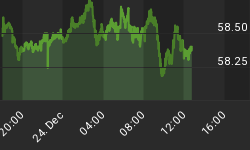The Wall Street Journal has an interesting report on the jobs created since the recession.
The article takes a close look at employment and wage data to see the makeup of newly created jobs.
There are some flaws and data inaccuracies in the journal report. Nonetheless it is an excellent starting point for discussion.
Please consider Just How Good (or Bad) Are All the Jobs Added to the Economy Since the Recession?
One refrain we hear often from readers of Real Time Economics is that the majority of jobs employers are creating are -- in their words -- not good, part time, temporary or seasonal minimum-wage positions offering scant benefits, mostly in the service sector.
"Nobody could live on just one of these jobs," J. Thomas Gaffney wrote in a Facebook comment in March. "It's not the quantity of jobs that matters, it's the quality, and these jobs are not quality jobs that pay a living wage or provide decent benefits."
Mr. Gaffney's comments, and others like it, pose a difficult question: How do you measure the quality of all the jobs the U.S. added and lost in a given month?
The top line figure from the employment report masks all sorts of variation. Millions of Americans quit or are laid off each month, while millions are hired to new jobs.
The journal provides a snapshot of job sectors ans also lists 117 job categories and provides a nice spreadsheet one can sort on numerous ways.
Job Snapshot

The problem with the snapshot is it gives more weight to growth rather than the actual size of the growth or contraction.
Find Your Industry
The Journal has a very nice "Find Your Industry" sortable list of 117 job categories. In the list I found at least one of data error.
I also caution about overlapping job categories. Here is a section of the table I produced, sorted by size of industry, not size of growth.
I added the last two columns.
| Category | Percetange Change | Average Weekly Pay | Employees April 2016 | Employees April 2007 | Employment Change |
| Leisure and hospitality | 14.10% | $383.41 | 15,459,000 | 13,375,000 | 2,084,000 |
| Food services and drinking places | 16.90% | $338.69 | 11,308,300 | 9,552,000 | 1,756,300 |
| Local government education | -3.00% | Not available | 7,810,500 | ||
| Construction | -10.90% | $1077.02 | 6,670,000 | 7,686,000 | -1,016,000 |
| Local government, excluding education | -0.40% | Not available | 6,399,300 | ||
| Hospitals | 11.00% | $1133.33 | 5,065,400 | ||
| Specialty trade contractors | -10.70% | $1029.5 | 4,246,400 | 4,890,000 | -643,600 |
| Employment services | 5.30% | $615.6 | 3,597,300 | 3,286,000 | 311,300 |
| Educational services | 18.60% | Not available | 3,529,600 | ||
| Food and beverage stores | 8.10% | $439.5 | 3,096,500 | 2,834,800 | 261,700 |
| Membership associations and organizations | 0.50% | $813.58 | 2,967,200 | 2,962,200 | 5,000 |
| Durable goods*** | -5.40% | $1137.19 | 2,954,200 | 9,020,000 | -1,310,000 |
| State government, excluding education | -5.00% | Not available | 2,671,700 | ||
| Credit intermediation and related activities | -6.90% | $1131.9 | 2,598,400 | 2,892,500 | -294,100 |
| Insurance carriers and related activities | 7.80% | $1328.57 | 2,594,200 | 2,386,800 | 207,400 |
Data Errors, Overlaps, Missing Data
- For Durable Goods, I get 7,710,000 employees, not 2,954,200. That's a huge decline of 1,310,000 high paying jobs. Decrease is per my calculation. April 2016 is the WSJ erroneous number.
- Food and Drinking Places is a subset of Leisure and Hospitality.
- Specialty Trade is a subset of Construction.
- I could not find a number for Hospitals other than totaling up 50 states so I did no further analysis. I have another problem with that category. It's simply too broad.
- I ignored any job category that had no wage component.
Summation
- Weeding out the duplicates, I see an increase of 2,657,500 poor paying jobs.
- Weeding out the duplicates, I see a decline of 2,412,700 high paying (over $1,000 a week) jobs. I added 207,400 insurance jobs to this total.
- I am reluctant to do anything with hospitals because I cannot find the numbers, and because the category is too broad. Averaging nurses and other employees without further breakdowns and knowing what is what is problematic.
My subset does not tell the full story either. On average, things are worse.
There are some high paying jobs added but also a slew of low paying jobs. For example, Computer Systems Design grew 39.2% to 1,975,300. That's a high paying job at $1731.35.
But Individual and Family Services grew a whopping 51.5% to 2,192,100 jobs. That's a poor paying job at $466.45 per week.
Other General Merchandise Stores employment grew 27.6% to 1,866,200 jobs. That category did not have an average weekly salary figure, but it's safe to assume low.
Telecommunications, a high paying job shed 22.6% of the workforce to 797,800.
Management and Technical Consulting Services gained 34.3% to 1,334,100. That's a high paying job at $1434.86 per week.
Sea of Red
Add it all up and there are some winners in a sea of red. There's no way to spin this data positive, or even neutral.
















